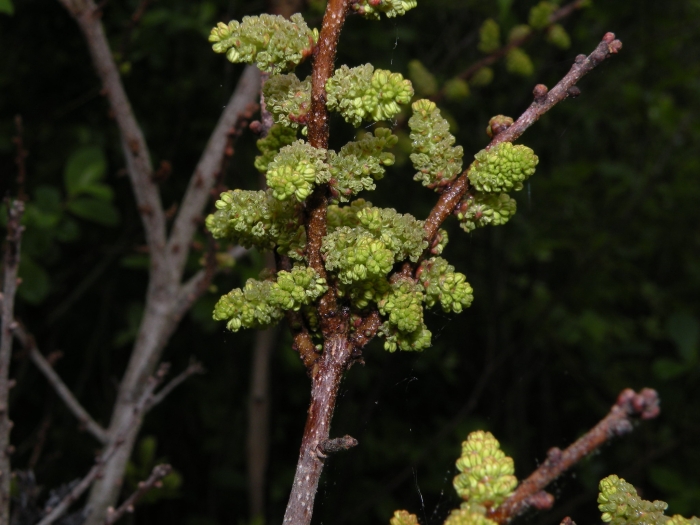Southern Bayberry
(Morella caroliniensis)
Southern Bayberry (Morella caroliniensis)
/
/

Doug McGrady
CC BY 2.0



















































Estimated Native Range
Summary
Southern Bayberry is valued for its adaptability to wet soils and salt spray, making it suitable for coastal landscapes and restoration projects. It is also used as a hedge or screen and is appreciated for its wildlife value, as the berries provide food for birds. This shrub thrives in full sun to part shade and is tolerant of a range of soil types, though it prefers moist, well-drained soils. It is relatively low-maintenance, but can suffer from leaf spot diseases in humid climates. Southern Bayberry is not known for aggressive roots or significant disease problems, making it a reliable choice for gardeners. It is also a host plant for the larvae of the Red-banded Hairstreak butterfly, adding an ecological benefit to its cultivation.CC BY-SA 4.0
Plant Description
- Plant Type: Shrub, Tree
- Height: 6-8 feet
- Width: 6-8 feet
- Growth Rate: Moderate
- Flower Color: Green
- Flowering Season: Spring
- Leaf Retention: Evergreen
Growth Requirements
- Sun: Full Sun, Part Shade
- Water: Medium
- Drainage: Slow, Medium, Fast
Common Uses
Bank Stabilization, Bee Garden, Bird Garden, Butterfly Garden, Deer Resistant, Drought Tolerant, Edible*Disclaimer: Easyscape's listed plant edibility is for informational use. Always verify the safety and proper identification of any plant before consumption., Erosion Control, Fire Resistant, Fragrant, Low Maintenance, Salt Tolerant, Water Garden
Natural Habitat
Coastal plains, forest margins, bogs, and wetland edges
Other Names
Common Names: Evergreen Bayberry, Southern Bayberry, Pocosin Bayberry, Wax-Myrtle, Wasgagel
Scientific Names: , Myrica caroliniensis, Morella caroliniensis, Myrica heterophylla, Myrica carolinensis, Myrica curtissii, Morella carolinensis, Myrica caroliniana, Cerothamnus caroliniensis, Cerothamnus carolinensis
GBIF Accepted Name: Morella caroliniensis (Mill.) Small